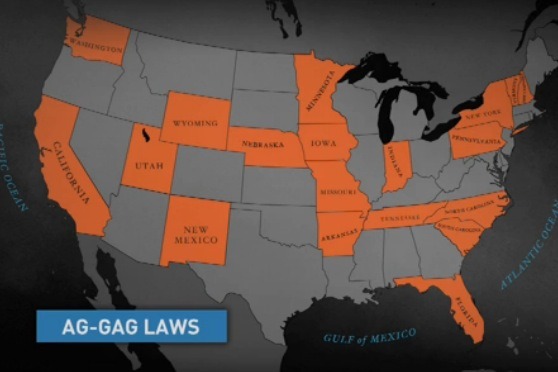Solitary
Big Cats are Solitary by Nature
Because we are primates, who are naturally social animals, we often impose our needs and desires on cats who are solitary by nature.
I can’t tell you how many times people have bemoaned the fact that most of our cats are housed alone. People often insist the animal would be happier with a cage mate, because they couldn’t imagine living alone. Cats prefer solitude. They don’t need us and they don’t need each other.
This is where people say, “Oh yeah, well what about lions?”
That tells me they know almost nothing about lions. While it may be common to see lions living in prides in the wild, what the average person doesn’t know is that those are family groups who have been born into the tribe. Nature, in her infinite wisdom, realizes that inbreeding will result in sickly cats who eventually die out, so males have to fight to lead a pride and to have mating privileges. Younger males, who have been driven from their own birth prides by their fathers, have to find other tribes if their genes are going to be passed down. To do that they have to kill any dominant males in the pride and all of their cubs. It’s a bloody battle for survival of the species and not one that should be emulated in captivity.
See for Yourself
This video, captured from our live explore.org/bigcatrescue web cam, in the Vacation Rotation enclosure, by Susann Mesna, illustrates two of the most common questions I hear. First is, why can’t they have a friend live with them and the second is, don’t they want to be petted. Big cats are solitary by nature, so the vast majority of our cats prefer to live alone, and do. These tigers are siblings who are neutered and spayed and have lived together for 20 years. We have to separate them at feeding time so they don’t kill each other, but the rest of the time they get along pretty well and seem to prefer being together. As you can see though, things can get ugly pretty quickly and there is no way to break up a tiger fight.
Notice how Arthur keeps rubbing his cheek on the wall of the cage? When people see our cats do that near us, they usually assume the cats are asking to be petted. Nothing could be further from the truth. The cats are marking their territory and daring us to cross the line. In this video Arthur is trying to move Amanda away from the wall so he can attack her from behind. He’s telling her, “This is my territory and this is my wall; back away from it!” She’s too smart for that ploy though.
In The Wild
In the wild a mother may raise her kittens or cubs from a year and a half to five years, depending on the species and the environmental factors, such as availability of prey. When they are grown, she will run them off and if they meet again, it could be a battle to the death over territory. Sometimes people see images of cats they think to be adults, living in groups in the wild, but that is usually a mother and her nearly grown cubs. They will be full size a long time before they are fully mature and ready to make their own place in the wild.
In Captivity

In captivity one of the worst things I’ve seen when traveling to zoos, private back yard menageries and “sanctuaries” is that people force cats to live in groups. Whether it is because the person who has set up the caging system doesn’t understand the cats’ needs, or whether they have succumbed to the public constantly demanding that cats be forced into shared space isn’t clear, but either way it is usually a miserable and dangerous existence for the cats. Cats want their own space, their own free access to food and water, their own dens and their own platforms and toys. They don’t like to share.
There are rare exceptions, where cats have been raised together since cubs, that they will tolerate each other and may even find some joy in chasing each other around and grooming each other, but that is the exception, rather than the rule. Even in cases where cats have lived and shared space together their whole lives, the cage has to be built in such a way that they can be easily separated when food, treats or enrichment is involved. That extends to their medical needs too. If cats share space, how can you tell if each cat ate their entire diet, or if each cat is eliminating properly, or get a pill into one without another stealing the treat with the medication?
What I usually see, at places where cats are kept in groups, is that there are dominant cats who get the lion’s share (sorry, couldn’t help that one) of the food, water, best toys, and best lounging spots. There are then the cats at the other end of the totem pole, who have fearful eyes, battered ears, missing tails, scars and are clearly not enjoying their lives. Then there all of the cats in the middle who are desperately trying not to be the least powerful cat in the group, even if they don’t think they can take over as leader. How can a place call themselves a sanctuary when most of the cats in it are not living a peaceful life?
The fact of the matter is that it is cheaper to make cats share space and, as wicked as it sounds, it gives some facilities the ability to “rescue” more cats as their cats kill each other or die from undiagnosed illnesses or from the stress of being forced to fight every day of their lives. Anyone who rescues wild animals can tell you that the public LOVES to fund a rescue but the money raised is never enough for more than the first year of care. In order to keep people donating, many places feel like they have to keep bringing in more cats. When you consider that they can live into their late teens and early twenties it becomes clear why they may not want to foster situations that allow last year’s rescued cat to achieve their full potential in longevity.
The things I’ve heard these people say is unbelievably callous. They say things like, “I rescued them, so they can work the rest out themselves.” No, they really can’t, because the way they would work that out in the wild means putting miles in between themselves and other cats. There are no captive situations that make that possible. There are some that do a better job than others, but most are crammed into quarters that aren’t even big enough for one cat, much less a whole group of them.
So, How Do You Decide?
You will hear others insist that their cats are happy living in groups, even mixed groups of differing species, and the photos and videos they post may seem to back that up. It isn’t something you can decide in a sound bite or from a few photos or videos. To really know if cats are living to their full potential you would have to do cortisone studies of their feces to know if the “fight or flight” hormones are being excreted in excessive amounts. Some zoos have done such studies on cheetah and find that just being in captivity causes them to suffer greatly from always being on edge. That is compounded by the fact that they are usually kept in groups, and mixed and matched a lot, because they don’t want to breed in captivity.
The proof is in the age and condition of the cats at the end of their lives.
 There are VERY few facilities that post all of their exotic cats by name, birthdate and bio like we do. Even fewer who update you in real time about changes in their health and habits like we do. There are none, other than Big Cat Rescue, that I know of who also post a tribute to every cat who ever lived at the sanctuary. On that site we list their date of birth, if known, and approximated based on vet observations at the time of rescue, which is posted, their date of death and the vet’s necropsy findings. From that you can see that cats at Big Cat Rescue on average live to be 17, with some outliers who have lived to 24 to a month shy of 30. Other places will often post a claim of an old age at the time of death but have never provided any corroborating evidence during the cat’s life.
There are VERY few facilities that post all of their exotic cats by name, birthdate and bio like we do. Even fewer who update you in real time about changes in their health and habits like we do. There are none, other than Big Cat Rescue, that I know of who also post a tribute to every cat who ever lived at the sanctuary. On that site we list their date of birth, if known, and approximated based on vet observations at the time of rescue, which is posted, their date of death and the vet’s necropsy findings. From that you can see that cats at Big Cat Rescue on average live to be 17, with some outliers who have lived to 24 to a month shy of 30. Other places will often post a claim of an old age at the time of death but have never provided any corroborating evidence during the cat’s life.
If there are other places that you want to support and promote then ask them to give you, and the rest of the world, all the information that we give our donors. If they are doing right by their animals, the world will take notice and support them. If they aren’t then why would you want to be involved with them?





Will you assist a community reportedly seeing puma? I live in Waller County, Texas.